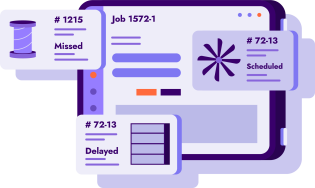Split System Maintenance: Ensuring Efficiency and Longevity

Maintaining split systems is essential for their efficient operation and long lifespan. In this blog post, we will delve into the various aspects of split system maintenance for commercial HVAC. From understanding the crucial components to performing essential checks, we’ll cover it all.
Additionally, we’ll discuss the significance of preventive and predictive maintenance, regular cleaning and filter replacement, routine inspections, and being prepared for unexpected setbacks. Lastly, we’ll showcase how FieldInsight, our comprehensive software solution, can streamline and enhance your split system maintenance tasks.
Understanding Your Split System
To ensure effective maintenance, it’s crucial to understand the key components of a split system. The indoor unit houses the evaporator coil, fan, and air filter, while the outdoor unit contains the condenser coil and compressor. Each component plays a vital role in the overall functioning of the split system.
The evaporator coil absorbs heat from the indoor air, while the condenser coil releases it to the outside environment. The fan helps circulate the conditioned air, and the compressor facilitates the refrigeration process. The air filter traps dust, allergens, and pollutants, improving indoor air quality. Regular maintenance is necessary to keep these components clean and in optimal condition.
The Importance of Regular Split System Maintenance
Consistent asset maintenance is paramount for the efficient operation and longevity of split systems. Neglecting maintenance tasks can lead to decreased efficiency, higher energy consumption, and even system breakdowns.
Routine maintenance helps identify and address issues early on, preventing costly repairs and extending the lifespan of the system. By investing time and effort into regular maintenance, you ensure that your split system operates at its peak performance, providing optimal comfort while minimizing energy waste.
Essential Checks for Split Systems
Performing regular checks is vital to ensure the smooth operation of your split system. First, focus on the filters. Dirty filters restrict airflow, reduce system efficiency, and can even cause damage to other components. Clean or replace the filters according to the manufacturer’s recommendations, typically every one to three months.
Next, inspect and clean the condenser coils. Over time, these coils can accumulate dirt, dust, and debris, hindering heat exchange. Use a soft brush or vacuum cleaner to remove the build-up.
Additionally, ensure that there is adequate air circulation around both the indoor and outdoor units. Clear any obstructions and maintain sufficient clearance to allow proper airflow.
The Role of Preventive and Predictive Maintenance in Split Systems
Preventive maintenance involves routine inspections, cleaning, and replacement of components to prevent potential issues. By adhering to a scheduled maintenance plan, you can address minor problems before they escalate into major failures. This includes tasks such as cleaning coils, checking electrical connections, lubricating moving parts, and verifying refrigerant levels. Predictive maintenance takes a proactive approach by utilizing data analysis and advanced monitoring techniques to anticipate problems.
By monitoring performance metrics, analysing trends, and using condition monitoring tools, you can predict when a component might fail and take preventive action before it happens. Combining both preventive and predictive maintenance strategies ensures that your split system operates reliably and efficiently, reducing unexpected breakdowns and optimizing performance.
The Significance of Regular Cleaning and Filter Replacement
Regular cleaning and filter replacement are crucial aspects of split system maintenance. Dirty filters not only restrict airflow but also allow dust and allergens to recirculate in the indoor environment, potentially impacting air quality and triggering respiratory issues. It’s recommended to clean or replace filters regularly to maintain a healthy and comfortable indoor environment. When cleaning the filters, gently remove them and wash with mild detergent and water.
Let them dry completely before reinstalling. If the filters are disposable, replace them according to the manufacturer’s guidelines. By keeping the filters clean, you promote efficient airflow, reduce strain on the system, and ensure better air quality for occupants.
The Importance of Routine Inspections and Health Check-ups
Routine inspections and health check-ups are essential for maintaining the efficiency of split systems. During inspections, a qualified technician examines various system components, assesses their condition, and identifies any signs of wear, damage, or potential issues. They check refrigerant levels, test electrical connections, inspect motors and fans, and verify overall system performance.
These inspections help identify issues like refrigerant leaks, faulty electrical connections, or worn-out components. By detecting problems early, you can prevent further damage and ensure uninterrupted operation. Regular health check-ups not only maximize system performance but also contribute to energy savings, extend equipment life, and provide peace of mind.
Preparing for Unexpected Setbacks: The Role of Spare Components and Emergency Repairs
Being prepared for unexpected setbacks is crucial in the field service industry. When it comes to a ductless mini split system maintenance, having spare components on standby ensures quick repairs and minimal downtime. No matter what style or model of ductless system you are dealing with, it’s important to be prepared, having checklists ready for both indoor and outdoor components in the form of emergency procedures. It’s vital to keep commonly required parts such as capacitors, contactors, and fan motors readily available.
By having a well-stocked inventory, you can swiftly address issues during maintenance visits or emergency repair situations. Additionally, implementing emergency repair procedures and training your technicians for such scenarios is essential. Establishing a protocol for responding to urgent service requests and equipping your technicians with the necessary skills and tools ensures efficient and effective resolution of unexpected ductless systems failure.
Leveraging FieldInsight for Split System Maintenance
FieldInsight, our comprehensive software solution, offers a range of features to streamline and enhance split system maintenance. With FieldInsight, you can schedule and track maintenance tasks, generate reports, track the defects for your entire system, and monitor the health of your split systems. The intuitive interface allows you to create maintenance schedules, assign tasks to technicians, and receive real-time updates on job progress.
By centralizing all maintenance information in one place, FieldInsight simplifies your workflow, improves communication, and ensures that maintenance is performed promptly and efficiently. It also provides insights into system performance trends, enabling you to make data-driven decisions for optimizing maintenance strategies and improving overall operational efficiency.
Key Takeaways for Your Ductless mini split systems
Regular split system maintenance is vital for achieving optimal performance and extending the lifespan of your systems. By understanding the components, performing essential checks, practicing preventive and predictive maintenance, and leveraging tools like FieldInsight, you can ensure the efficiency and longevity of your split systems.
Don’t overlook the significance of timely cleaning, filter replacement, routine inspections, and being prepared for unexpected setbacks. Prioritizing split system maintenance not only saves you money in the long run but also promotes a comfortable and healthy indoor environment.
Start implementing these maintenance practices today and explore the benefits of using FieldInsight as your comprehensive solution for managing field service tasks.
What You Should Do Now
- Book a Demo. You’ll be in touch with an automation expert who has worked in this space for over 5 years, and knows the optimal workflow to address your needs.
- If you’d like access to free articles about managing HVAC workflows, go to our blog.
- If you know someone who’d enjoy reading this page, share it with them via email, Linkedin, Twitter, or Facebook.








